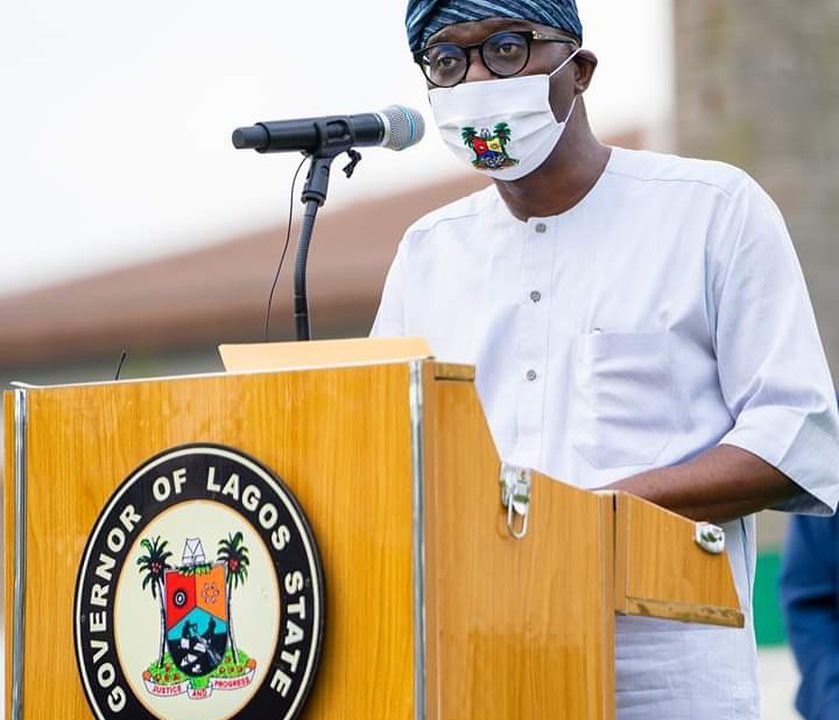
Cloth masks can offer 80% protection against coronavirus, new study finds
May 3, 2020
Catholic Church Donates ALL Its 425 Hospitals in Nigeria As COVID-19 Isolation Centres
May 12, 2020COVID-19: The PPE Our Health Workers Need to be Safe
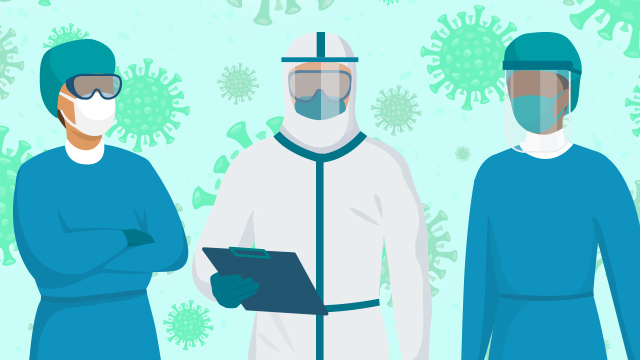
Two months into the invasion of COVID 19 in Nigeria, it has been reported that over 113 health workers have tested positive to the virus. Our health workers are fighting COVID-19 on the frontlines, but what can keep them from contracting the disease themselves?
The world is experiencing a shortage of personal protective equipment (PPE) amid the pandemic and its effects can be felt in Nigeria, where 10 Medical doctors were reported to have caught the virus in Kano recently due to lack of protection.
The worldwide shortage was caused by rising demand, panic buying, hoarding, and misuse, according to a World Health Organization (WHO) statement on March 3. WHO asked governments to increase production of PPE by 40% to meet the demand.
Below, we go over what our healthcare workers need to stay protected from COVID-19.
The PPE that hospital workers wear depends on the work they intend to do and the area where they work.
There are 4 levels of PPE protection.
1) LEVEL 4 – the COVID-19 wards and operating rooms require the most protection for personnel. This level of PPE protection consists of the following:
- Coveralls
- Surgical cap
- N-95 mask
- Scrub suits
- Goggles/face shield
- Double gloves
- Dedicated shoes
- Shoe covers
This applies to all personnel in the areas where confirmed cases of COVID-19 are admitted. They include healthcare workers who have to stay in these areas for at least 4 hours and anesthesiologists who intubate patients and stay for an entire operation.
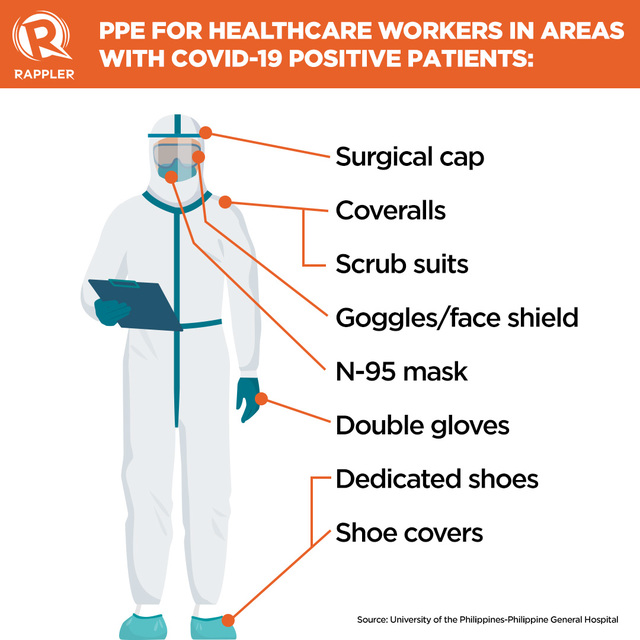
2) LEVEL 3 – for the triage and areas where patients under investigation (PUIs) are admitted. PPE protection consists of:
- Cap and goggles or face shield
- N-95 mask
- Gloves
- Gown or coveralls
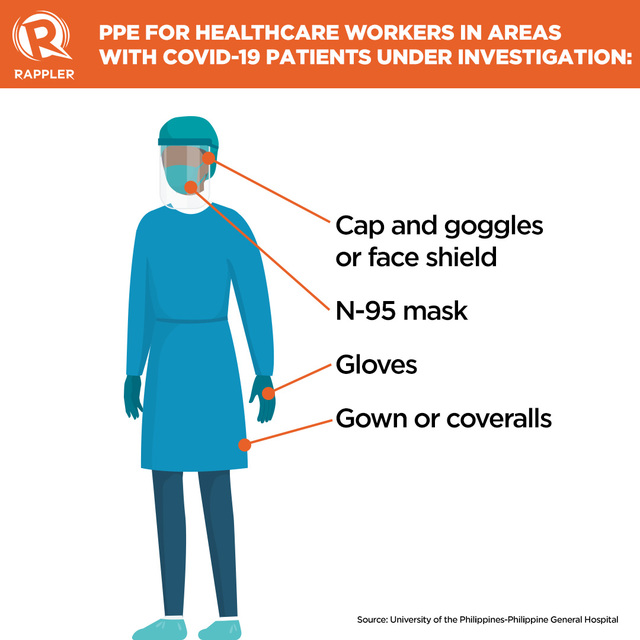 3) LEVEL 2 – for areas with bathrooms where healthcare workers can bathe after duty. They require the same amount of protection, as Level 3, but do not need face shields.
3) LEVEL 2 – for areas with bathrooms where healthcare workers can bathe after duty. They require the same amount of protection, as Level 3, but do not need face shields.
4) LEVEL 1 – for low-risk areas like the outpatient clinic and non-COVID-19 wards that require staff to wear surgical masks and goggles or face shields. Those working in administrative offices and the pharmacy, which are the lowest risk areas, are required to wear surgical masks at all times inside the hospital.
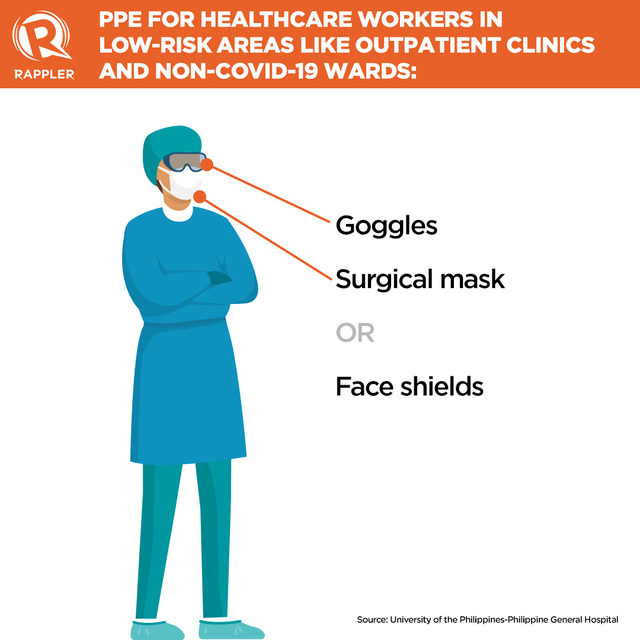
How many needed?
Healthcare workers – doctors, nurses, and medical technicians – use hundreds of PPE a day. Some of the gear like caps, goggles, and gowns, can be changed after a shift, but gloves need to be changed after each patient handled and masks should also be changed as needed.
Ideally, said Francisco, PPE are disposed of after one exposure, but when they’re low on gear like now, a healthcare worker will use the same PPE for all the confirmed COVID-positive patients just to extend its wear. Once done, they remove their equipment and leave the room and then don a new set if a patient has special needs like a clogged ventilator tube.
Wearing PPE can be tasking
Because it’s so hard to get them, healthcare workers who need to don a whole PPE set must wear them for a minimum of 8 hours.
“You’re not allowed to go to the toilet to pee, to drink, to wash your hands…because once you contaminate yourself you have to change the whole thing, you know, it’s so expensive,” said Del Rosario a medical doctor
“Some are being asked to wear diapers… Yeah, if you cannot control yourself. Or you just wasted a N10,000 suit,” he added.
Wearing a PPE can be especially tasking in the Nigeria because of the heat. Some healthcare workers have to wear their coveralls over their scrubs, and gloves need to be tucked into their sleeves so as not to expose any part of the skin.
“That’s why you hear stories about health workers getting sick, because they have been wearing this [PPE], because they get dehydrated. It gets so tiring,” Del Rosario said. – Rappler.com



